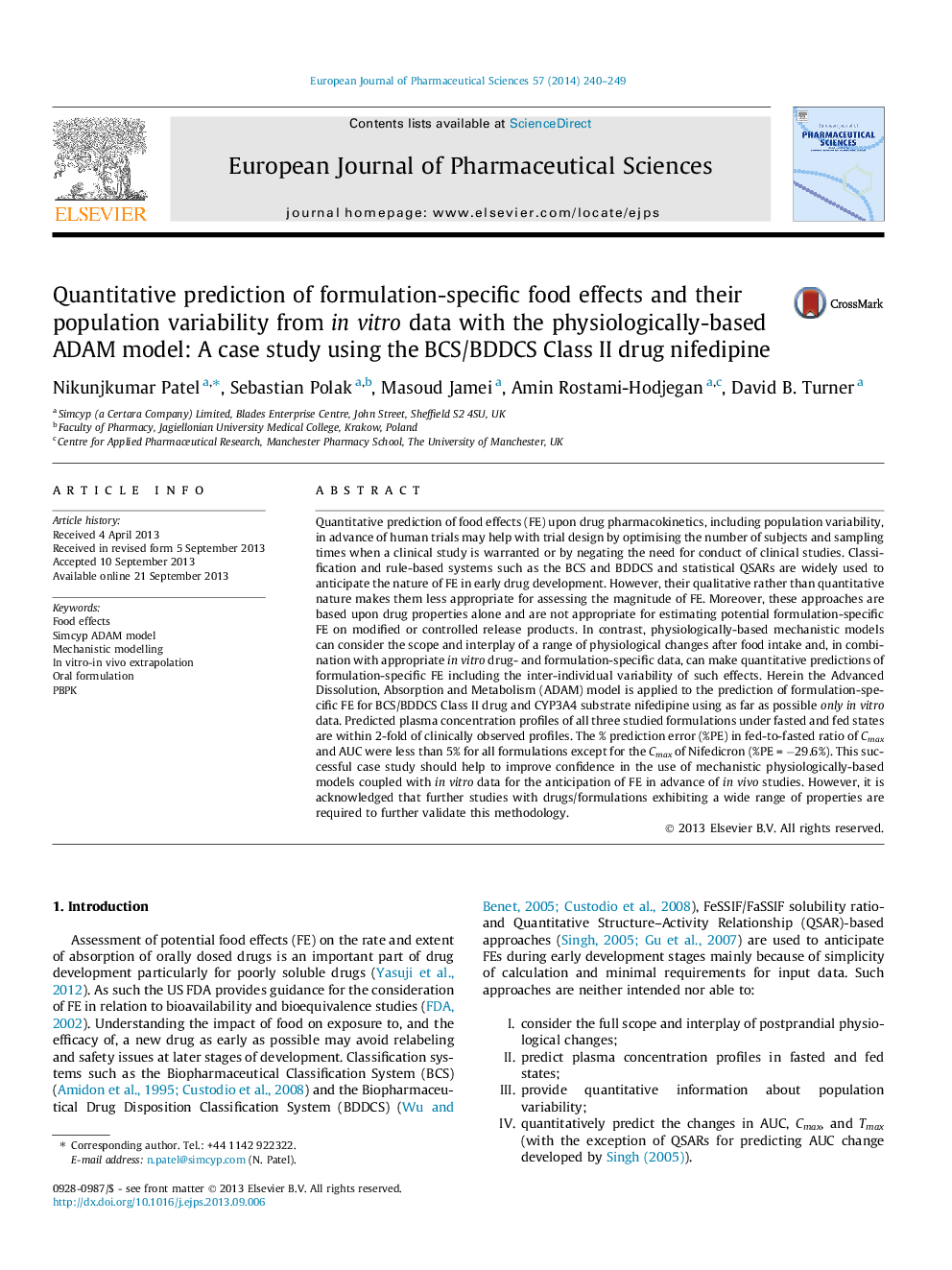| کد مقاله | کد نشریه | سال انتشار | مقاله انگلیسی | نسخه تمام متن |
|---|---|---|---|---|
| 5809999 | 1556193 | 2014 | 10 صفحه PDF | دانلود رایگان |

Quantitative prediction of food effects (FE) upon drug pharmacokinetics, including population variability, in advance of human trials may help with trial design by optimising the number of subjects and sampling times when a clinical study is warranted or by negating the need for conduct of clinical studies. Classification and rule-based systems such as the BCS and BDDCS and statistical QSARs are widely used to anticipate the nature of FE in early drug development. However, their qualitative rather than quantitative nature makes them less appropriate for assessing the magnitude of FE. Moreover, these approaches are based upon drug properties alone and are not appropriate for estimating potential formulation-specific FE on modified or controlled release products. In contrast, physiologically-based mechanistic models can consider the scope and interplay of a range of physiological changes after food intake and, in combination with appropriate in vitro drug- and formulation-specific data, can make quantitative predictions of formulation-specific FE including the inter-individual variability of such effects. Herein the Advanced Dissolution, Absorption and Metabolism (ADAM) model is applied to the prediction of formulation-specific FE for BCS/BDDCS Class II drug and CYP3A4 substrate nifedipine using as far as possible only in vitro data. Predicted plasma concentration profiles of all three studied formulations under fasted and fed states are within 2-fold of clinically observed profiles. The % prediction error (%PE) in fed-to-fasted ratio of Cmax and AUC were less than 5% for all formulations except for the Cmax of Nifedicron (%PEÂ =Â â29.6%). This successful case study should help to improve confidence in the use of mechanistic physiologically-based models coupled with in vitro data for the anticipation of FE in advance of in vivo studies. However, it is acknowledged that further studies with drugs/formulations exhibiting a wide range of properties are required to further validate this methodology.
148
Journal: European Journal of Pharmaceutical Sciences - Volume 57, 16 June 2014, Pages 240-249